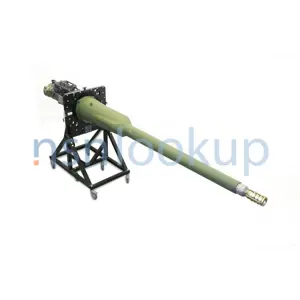 Additional Information for Recoilless Rifle Safety
Additional Information for Recoilless Rifle Safety
Recoilless rifle safety refers to the precautions and procedures that need to be followed when handling and operating recoilless rifles. Recoilless rifles are a type of firearm that are designed to minimize the recoil force generated when firing, making them easier to handle and more accurate.
Here are some important safety considerations when using recoilless rifles:
1. Familiarize yourself with the rifle: Before using a recoilless rifle, it is essential to read and understand the manufacturer's instructions and safety guidelines. This includes knowing how to load, unload, and operate the rifle properly.
2. Wear appropriate safety gear: When using a recoilless rifle, always wear proper eye and ear protection to protect yourself from potential hazards such as flying debris and loud noise.
3. Follow proper handling procedures: Always treat a recoilless rifle as if it is loaded, even if you believe it to be empty. Keep your finger off the trigger until you are ready to fire, and never point the rifle at anything you do not intend to shoot.
4. Maintain a safe shooting environment: Ensure that you are in a safe and appropriate shooting range or area that is designated for firearm use. Make sure there are no people, animals, or objects in the line of fire or within the potential range of the rifle.
5. Be aware of backblast: Recoilless rifles produce a backblast, which is a blast of hot gases and debris that is expelled from the rear of the weapon when fired. It is important to ensure that there is enough clearance behind the rifle to prevent injury or damage to people or objects.
6. Store and transport the rifle safely: When not in use, store the recoilless rifle in a secure and locked location, separate from ammunition. During transportation, ensure that the rifle is unloaded and properly secured to prevent accidental discharge.
7. Regular maintenance and inspection: Regularly inspect and maintain your recoilless rifle to ensure it is in proper working condition. This includes checking for any damage, cleaning the barrel and action, and lubricating moving parts as recommended by the manufacturer.
Remember, safety should always be the top priority when handling any firearm, including recoilless rifles. It is crucial to follow all safety guidelines and exercise caution to prevent accidents and injuries.
 Related Item Names for INC 22637 Recoilless Rifle Safety
Related Item Names for INC 22637 Recoilless Rifle Safety
 NATO Stock Numbers with Item Name 22637 Recoilless Rifle Safety Page 1 of 1
NATO Stock Numbers with Item Name 22637 Recoilless Rifle Safety Page 1 of 1
- 017068907
- 98319
- RNCC: 3 | RNVC: 2
- 014590748
- F1303-007810
- RNCC: 3 | RNVC: 9
- F1303-007810
- RNCC: 5 | RNVC: 2
- F1303-007810
- RNCC: 5 | RNVC: 9
- 000662822
- 8768371
- RNCC: 3 | RNVC: 2
- 144498490
- 383075L
- RNCC: 3 | RNVC: 2
- 007305076
- 7305076
- RNCC: 3 | RNVC: 2
- 144498465
- 381060V
- RNCC: 3 | RNVC: 2
- 410023205
- M.400.110.130.140
- RNCC: 3 | RNVC: 2
- 160057326
- UL2 -189012
- RNCC: 3 | RNVC: 2
- 330036284
- 1005-002359
- RNCC: 3 | RNVC: 2
- 123635923
- 1666-120200.000.0
- RNCC: 2 | RNVC: 2
- 1666-120200.000.0
- RNCC: 3 | RNVC: 2
- 144498464
- 381050K
- RNCC: 3 | RNVC: 2
- 160057325
- UL2-189014
- RNCC: 3 | RNVC: 2
